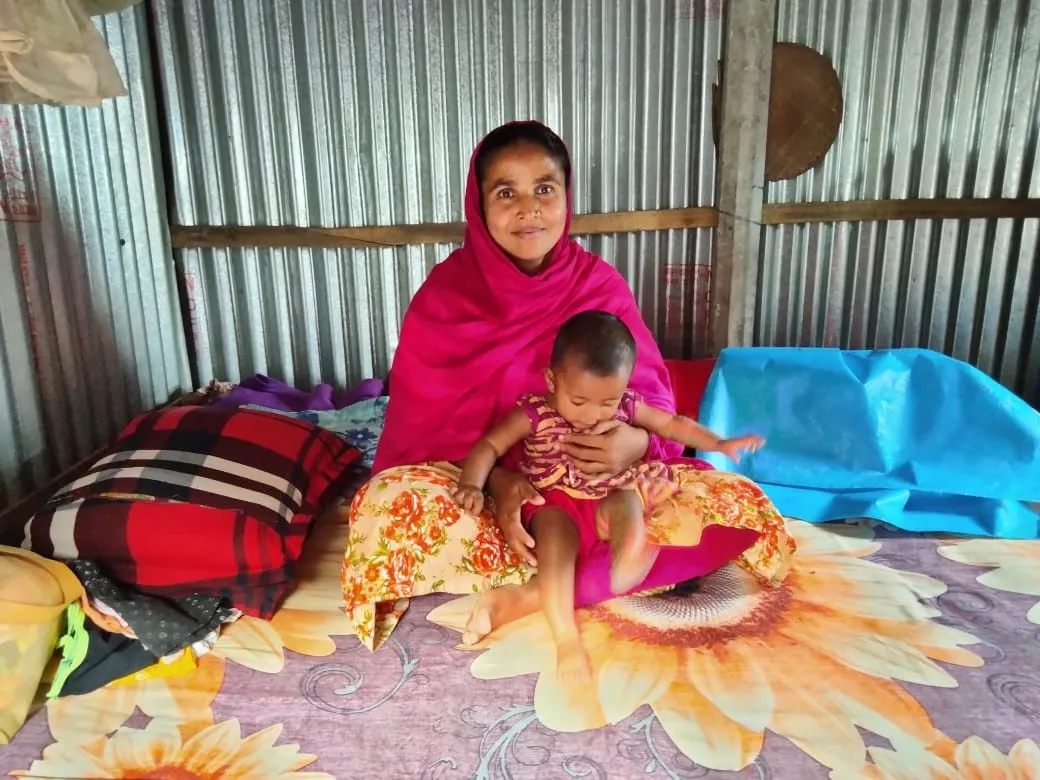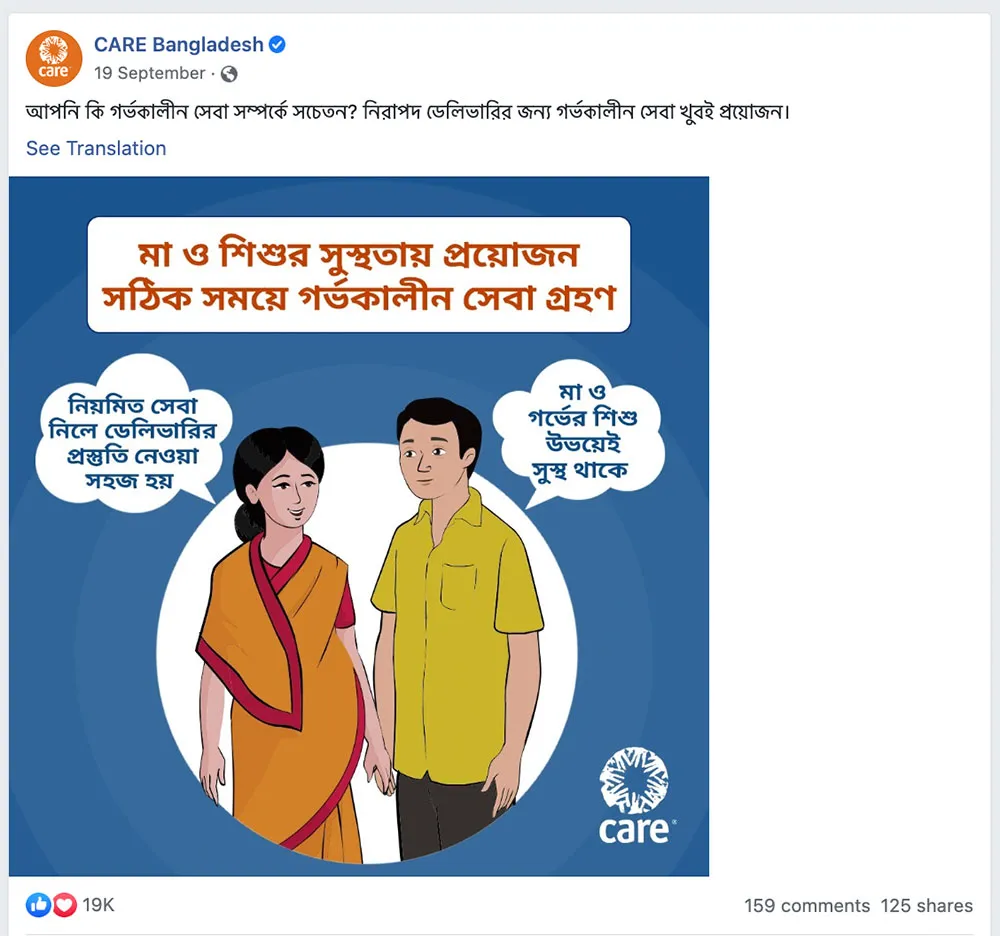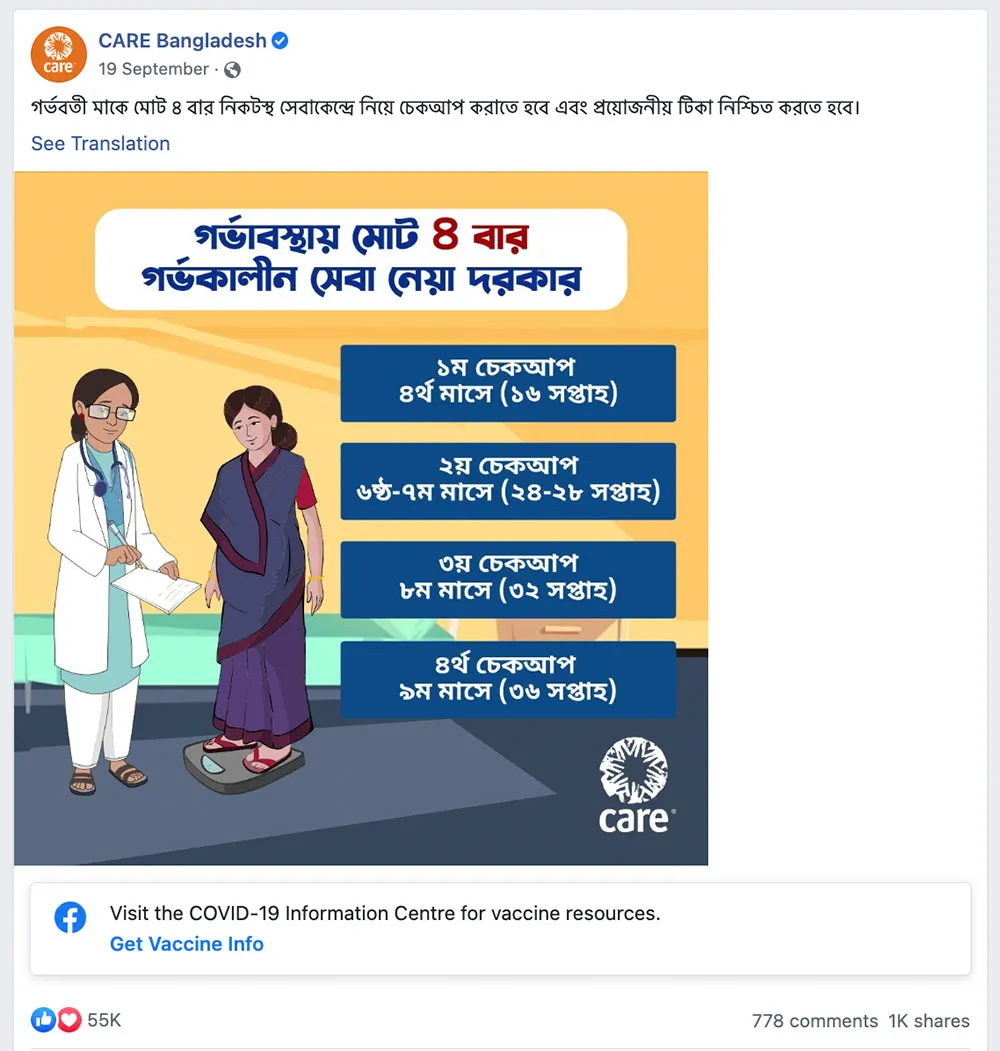Executive summary
Every day, more than 20 women lose their lives in Bangladesh due to preventable causes related to pregnancy and childbirth, according to data from The Lancet.
CARE Bangladesh has been working to reduce maternal and infant mortality with multifaceted programming to improve maternal health, nutrition, and child immunization. In the district of Gazipur, CARE is intensively working in close collaboration with the Bangladesh Government to impact this statistic. Since 2021, CARE Bangladesh has run multiple social behavioral change communication (SBCC) campaigns on Facebook and Instagram addressing health topics such as COVID-19, maternal health, and childhood immunization.
From August to December 2022, CARE Bangladesh launched a social media campaign to provide information on the importance of four antenatal visits and to increase institutional deliveries. The campaign targeted men and women of reproductive age (18-44 years) in Bangladesh.
Here are some lessons learned on this campaign:
TL;DR summary
- The campaign strategy ran across three phases, using a Multi-Cell Brand Lift Study to glean deeper insights.
- “Thumb-stopping” graphics that utilized best practices led to 2.7 million people engaging with the campaign’s ads through video views, likes, clicks, shares, and comments.
- Based on Brand Lift Study results, the campaign likely led 101,602 additional people in Gazipur to express that they know where to go for prenatal care.
The campaign
From August through December 2022, the team launched a campaign about the importance of prenatal care with three phases, each running for 3-4 weeks and building on the previous one. In addition, CARE Bangladesh wanted to understand the campaign’s performance differences between those who lived in Gazipur with exposure to offline programming, versus parents in other areas of Bangladesh.
The campaign used a mix of static images and dynamic content in phase one. Short videos and animations highlighted antenatal care and showcased the importance of four antenatal visits. The creative assets also showed how the support of all family members was essential.
“The beauty of social media is the opportunity to interact with the target audience in real-time,” said Priyotosh Das, Communications Officer at CARE Bangladesh about the creative strategy. “As they shared their reactions and opinions in the comment section, we picked up some important insights about their present behavior and concepts, which helped us to create follow-up content by addressing those concerns and misconceptions.”



